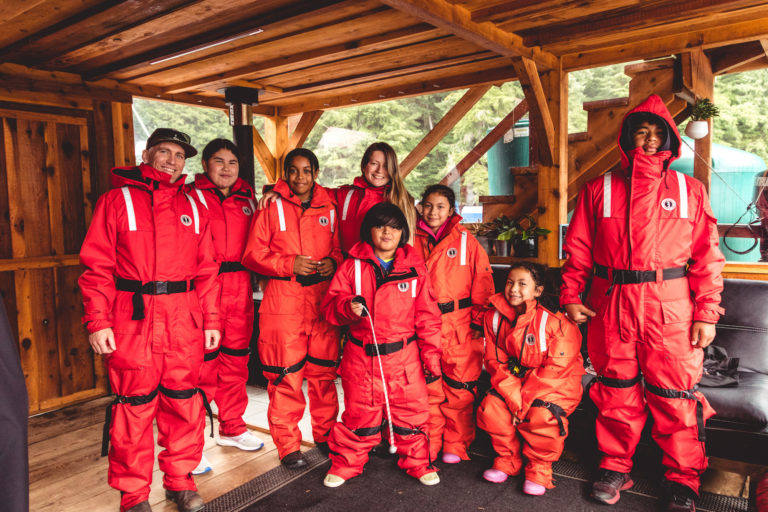Salmon camps show youth Indigenous science at work
January 25, 2022

January 25, 2022

Imagine a summer camp where you can watch grizzly bears catch salmon in streams, while learning about the migration and preparation of the fish hovering in the water at your feet.
Welcome to the Salmon Science Camp for Nisga’a youth, run by Dr. Andrea Reid (she/her), principal investigator of the Centre for Indigenous Fisheries at UBC. With new funding from the multi-institutional $24 million Ărramăt Project, Dr. Reid plans to expand these camps and open doors to scientific learning.
We started these camps in 2016, with funding from the Gingolx Village Government Education Department and NSERC Indigenous Science Ambassadors Program, focusing on Nisga’a Nation youth aged four to 17 years old in Gingolx, my grandmother’s home village in British Columbia, at the base of the Alaska Panhandle. Each summer since, we charter boats and hire buses to get young people out onto the land and water where they follow the salmon life cycle, through all parts of the watershed from spawning grounds to the ocean and back again.
They learn to identify plants and animals, meet technicians working for the Nisga’a fisheries and wildlife department, learn from Elders who carry important stories about hoon (salmon) and how we care for them, and get to play and experiment with different scientific tools, from radio telemetry technology to underwater drones to water testing toolkits!
The Gingolx Village Government education manager Renee Garner said youth return from a day on the water feeling connected to one another. One student told her they had learned how the spirit bear got its name: fish cannot see their paws in the water, making them like ghosts and great hunters, something she would never forget.
Led by the University of Alberta, the Ărramăt Project is focused on strengthening human health and well-being through conservation and sustainable relationships with biodiversity. As one of 51 co-applicants from around the world on the recent New Frontiers in Research Fund Transformation grant awarded to this Indigenous-led project, my work will include expanding the camps to involve youth from the three other Nisga’a Nation villages: Gitlaxt’aamiks, Gitwinksihlkw, and Laxgalts’ap. We also want to create exchanges with neighbouring Nations, so camp attendees can learn about their different relationships with fish, including preparation methods and how they differ across cultures and environmental contexts. These exchanges will also promote cross-cultural learning and relationship building, bringing Indigenous youth together from across the province. All our activities build on the fundamental idea that salmon health and human well-being are inextricably linked, and we all need to do our part to ensure a better future for us all.
These camps open a door to science and immersive learning experiences for Indigenous youth that might not necessarily be available due to the location of Gingolx, and they get to see a whole range of Nisga’a citizens as experts and scientists. This might mean they begin to see science as a future avenue for themselves, and view caring for salmon in the way Nisga’a have always done as not only an act of stewardship, but a truly scientific practice that is based on observation, experimentation, and other systematic ways of building knowledge about the world in which we all live. The camps demonstrate for youth that Indigenous science is science – it’s just as valid and important as conventional academic knowledge.
We honour xwməθkwəy̓ əm (Musqueam) on whose ancestral, unceded territory UBC Vancouver is situated. UBC Science is committed to building meaningful relationships with Indigenous peoples so we can advance Reconciliation and ensure traditional ways of knowing enrich our teaching and research.
Learn more: Musqueam First Nation